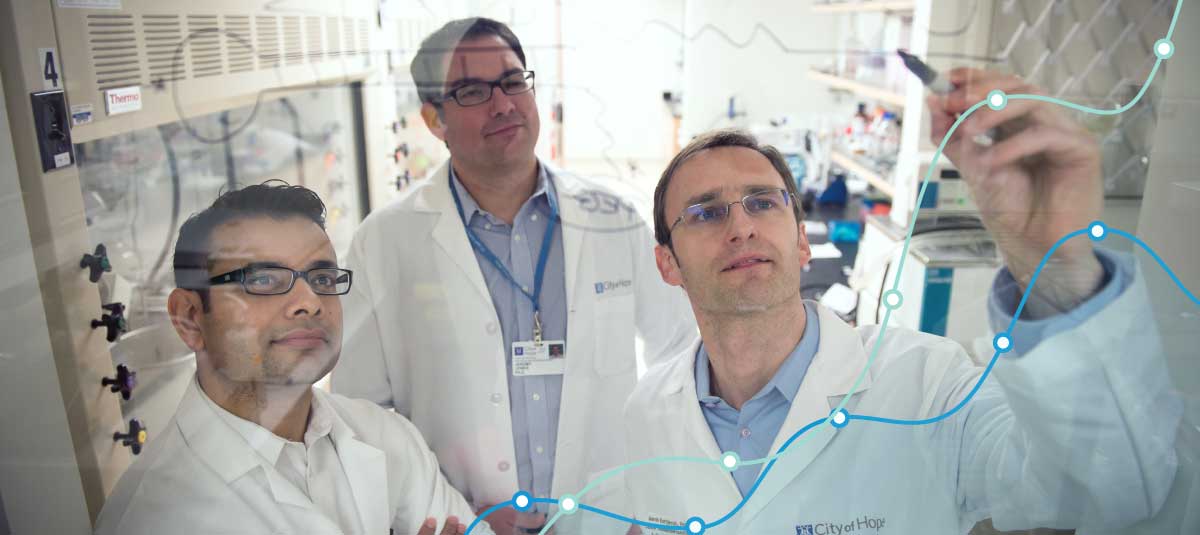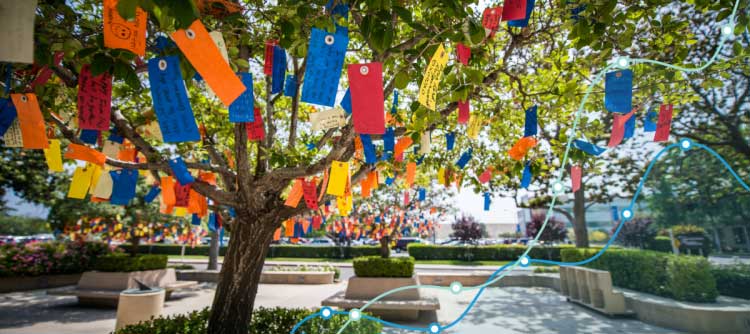How City of Hope Reached New Donors and Kept Them Coming Back

From 2016 to 2017, City of Hope committed to growing their year-over-year revenue by 25 percent. In order to hit that goal, they built a strategy that centered on their DIY peer-to-peer fundraising program, ourHope.
As part of their effort, the organization relaunched the ourHope page to the public, designed new tools for supporters who signed up to fundraise, and grew their digital philanthropy team. After all was said and done, they exceeded their 25 percent goal and grew their revenue by 60.93 percent year over year.
We sat down with Carola Maier, Director of Digital Philanthropy, to hear more about this strategy and how it not only increased revenue, but also expanded their donor network. Below, hear some of the tactics City of Hope used that you might be able to apply to your own nonprofit.
Tap Your Networks
City of Hope is able to reach millions of lives through their research efforts. They also have longstanding corporate partners. Both of these elements have helped them push well beyond their previous donor networks and expand into entirely new audiences across the United States.
To engage new donor networks, they first keyed in on the ourHope page relaunch. Carola and the rest of the team targeted industry groups, both inside and outside their network, with specific marketing materials about the ourHope page.
At the same time, with ourHope being a DIY peer-to-peer fundraising hub, City of Hope also activated these groups to set up personal and team fundraising pages. To cap off the strategic plan, they simultaneously grew individual giving among their myriad corporate partners.
Examine the Campaign Specifics
Prior to 2017, City of Hope focused on creating and implementing new campaigns and giving initiatives. This year, however, they committed to expanding these existing campaigns across their DIY and third-party peer-to-peer fundraiser networks.
For example, their annual NoShaver campaign that takes place during No Shave November used to be solely supported by the Chicago Real Estate Industry group. In 2018, City of Hope opened that campaign up to other new corporate partners and demographics who signed up to fundraise.
This campaign push was paired with their Giving Tuesday efforts, where they promoted a 5x matching gift period during the NoShaver campaign on all of their channels, like social media and email. The combined effort here not only led to increased revenue across the new communities of fundraisers, fundraising teams, and team captains, but also their standalone DIY peer-to-peer fundraisers through the ourHope page.
Retain Those Donors
When you tap into new networks of supporters, you have to be ready to capture their attention and retain them for the long-haul. Thus, City of Hope uses an onboarding and personalized welcome email series that every new member of their fundraising community is opted into upon signing up.
After the first emails, they follow up with monthly engagement emails that focus on City of Hope’s cutting-edge research, the seasonal events they host, and inspiring stories of impact about the patients they serve.
The aim is for City of Hope to engage their supporters in multiple ways. To that end, they send out appeals for:
- Direct response gifts
- Encourage them to create DIY fundraising pages
- Ask them to sign up for events
- Inform them about different industry groups they can participate in
“With ourHope the more we can engage and retain fundraisers year after year with their campaigns and the more we can engage with the donors the more likely we are to be able to convert them to true and loyal City of Hope donors.”
To successfully retain donors, City of Hope needs to make sure all of their supporter-centric strategies align with their internal organizational culture as well. According to Carola, they place heavy emphasis on collaboration, which is necessary to breakdown silos between different departments.
That, in turn, improves cross-divisional teamwork and is responsible for bringing their campaigns like NoShaver to fruition.

Make Data-Driven Decisions
Data is crucial to City of Hope as they create new campaigns, devise strategies for new donor engagement, or work to retain their supporters. For example, when it comes to the DIY peer-to-peer fundraising through ourHope, City of Hope pays close attention to zero-dollar fundraisers.
Based on their numbers, Carola and the team know that non-personalized fundraising pages with no set donation designation have a high likelihood of being a zero-dollar page. This data-driven insight shows where the fundraising strategy can be strengthened with additional resources or immediate focus.
The answer could be to create supplemental materials for their new fundraisers that show them how to personalize their pages. At the same time, they can focus their efforts behind memorial fundraising pages—which have the highest average gift size and overall revenue—instead of birthday fundraisers, which have the lowest.
A strategy is nothing without the right data to vet its effectiveness, and it’s the final touch for City of Hope’s success expanding into new donor networks.
City of Hope is only one of 100 different organizations who landed on this year’s Classy 100. They successfully expanded their geographical donor network, but there are plenty of other case studies about organizations who refined their existing tactics, grew recurring donors, or tried new campaign types.
If you’re interested in learning more about organizations on the Classy 100 like you, make sure to head over and check out the full list now.

The Nonprofit Growth Guide
Subscribe to the Classy Blog
Get the latest fundraising tips, trends, and ideas in your inbox.
Thank you for subscribing
You signed up for emails from Classy
Request a demo
Learn how top nonprofits use Classy to power their fundraising.



